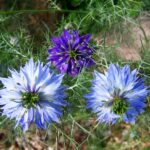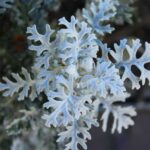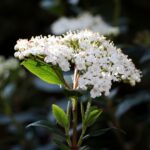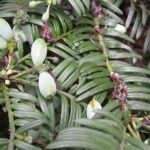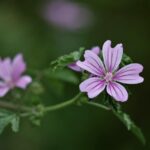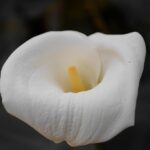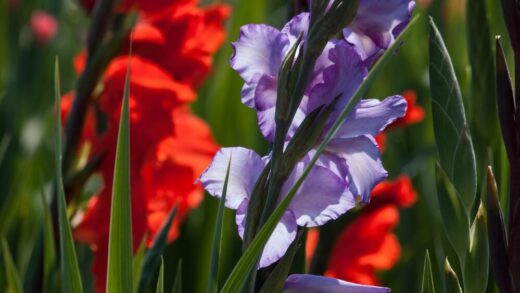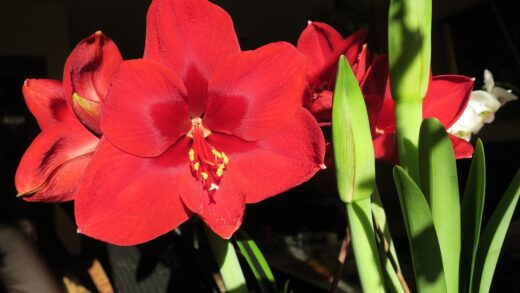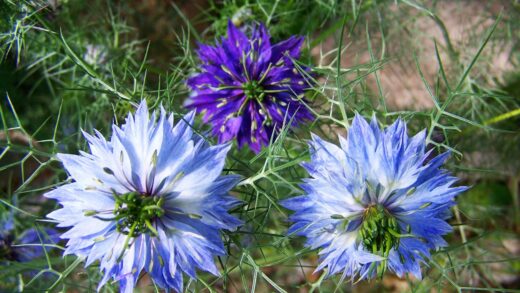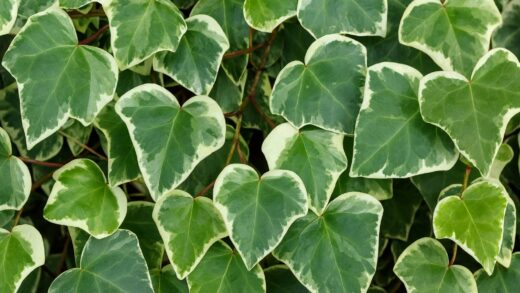Caryopteris, commonly known as bluebeard or blue spirea, is a delightful, low-maintenance shrub prized for its late-summer blooms that bring a splash of vibrant blue to the garden when many other plants are beginning to fade. Its aromatic foliage and attraction to pollinators like bees and butterflies further enhance its appeal, making it a valuable addition to mixed borders, perennial beds, and even container gardens. Understanding its basic needs is the first step toward cultivating a healthy, thriving plant that will reward the gardener with a stunning floral display year after year. Proper care ensures not only vigorous growth and abundant flowering but also helps the plant establish a strong root system, making it more resilient to environmental stresses.
To achieve the best results with bluebeard, selecting an appropriate planting site is paramount. This shrub thrives in a location that receives full sun, meaning at least six to eight hours of direct sunlight each day. Insufficient light can lead to leggy growth, reduced flowering, and a less compact, less attractive overall shape. The plant is not overly particular about soil type, but it performs best in well-drained soil. It is crucial to avoid areas where water tends to collect, as waterlogged conditions can lead to root rot, a serious issue for Caryopteris. Amending heavy clay soils with organic matter like compost can significantly improve drainage and provide a better growing environment.
Once established, Caryopteris is remarkably drought-tolerant, making it an excellent choice for xeriscaping or gardens in drier climates. However, during its first growing season, it requires regular watering to help it develop a deep and extensive root system. After the initial establishment period, the watering frequency can be reduced, but it is still important to provide supplemental water during prolonged periods of drought, especially in very hot weather. The key is to water deeply but infrequently, allowing the soil to dry out between waterings. This encourages the roots to grow deeper in search of moisture, which in turn makes the plant more resilient.
Maintenance for bluebeard is relatively straightforward, with the primary task being annual pruning. This is typically done in late winter or early spring before new growth emerges. Since Caryopteris blooms on new wood, a hard pruning encourages the production of new stems, which will carry the season’s flowers. Cutting the entire plant back to about 15-20 centimeters from the ground revitalizes the shrub, promotes a more compact and bushy habit, and ensures a prolific display of its characteristic blue flowers. Neglecting to prune can result in a woody, sparse plant with diminished flowering.
The importance of location
Choosing the right location is the single most critical factor in the successful cultivation of Caryopteris. This sun-loving shrub requires ample direct sunlight to produce its signature vibrant blue flowers and maintain a dense, attractive form. A spot that offers at least six hours of unfiltered sunlight per day is ideal. In locations with less sun, the plant may survive, but it will likely become leggy and produce fewer, less intense blooms. The orientation of the garden should be considered, with south-facing or west-facing aspects often providing the necessary light intensity for optimal performance.
More articles on this topic
Beyond sunlight, soil conditions play a crucial role in the long-term health of bluebeard. The plant exhibits a strong preference for well-drained soil and is intolerant of “wet feet.” This means that sites with heavy, compacted clay soil or low-lying areas that collect water are unsuitable without significant amendment. Poor drainage can quickly lead to root rot, a fungal disease that attacks the root system and can be fatal to the plant. Before planting, it is wise to assess the soil’s drainage by digging a hole and filling it with water; if it takes more than a few hours to drain, the soil structure needs improvement.
To enhance soil drainage and create an ideal growing medium, incorporating organic matter is highly beneficial. Materials such as compost, well-rotted manure, or leaf mold can be mixed into the native soil at the time of planting. This not only improves the soil structure, allowing excess water to drain away more freely, but also enriches the soil with essential nutrients. For particularly heavy soils, adding coarse sand or fine gravel can also help to increase porosity. A slightly alkaline to neutral pH is preferred by Caryopteris, but it is generally adaptable to a range of soil pH levels as long as the drainage is adequate.
Considering the mature size of the chosen Caryopteris cultivar is also an important aspect of siting. While many varieties remain compact, typically reaching about one meter in height and spread, some can grow larger. It is important to provide enough space for the shrub to reach its full potential without being crowded by other plants. Good air circulation around the plant is also beneficial, as it helps to dry the foliage quickly after rain, reducing the risk of fungal diseases. Planting it in a mixed border, as a low hedge, or as a specimen plant can all be successful strategies if these fundamental location requirements are met.
Pruning for health and bloom
Pruning is a fundamental aspect of Caryopteris care, essential for maintaining the plant’s health, vigor, and flowering capacity. Since bluebeard produces its flowers on the current season’s growth, known as “new wood,” an annual pruning is necessary to stimulate the development of these flower-bearing stems. The optimal time for this task is in late winter or early spring, just as the harshest cold has passed but before the plant begins to actively grow. Pruning too early in the winter can expose the fresh cuts to severe frost damage, while pruning too late can delay or reduce the flowering display.
More articles on this topic
The most common and effective pruning method for Caryopteris is a hard prune, often referred to as coppicing. This involves cutting all of the stems back to a height of approximately 15 to 20 centimeters above the ground. While this may seem drastic, the plant responds with vigorous new growth, resulting in a more compact, well-branched shrub that is covered in flowers from late summer into autumn. Use clean, sharp pruning shears or loppers to make clean cuts, which will heal more quickly and are less susceptible to disease. It is also a good opportunity to remove any dead, damaged, or crossing branches to improve the overall structure of the plant.
For gardeners in colder climates where Caryopteris may experience significant winter dieback, the pruning process serves a dual purpose. In these regions, the stems may be killed back to the ground by freezing temperatures. In the spring, any wood that has not survived the winter should be cut away, typically back to the base of the plant or to the lowest set of viable buds. This renewal pruning ensures that the plant’s energy is directed into producing healthy new shoots from the base, rather than trying to support damaged, non-productive old wood. Essentially, nature has already started the pruning process, and the gardener simply needs to complete it.
Beyond the annual hard prune, minimal additional trimming is generally required during the growing season. However, light shaping can be done if a particular stem grows out of proportion with the rest of the shrub. Deadheading, or the removal of spent flowers, is not necessary for Caryopteris as it does not significantly promote reblooming in the same season. The attractive seed heads can provide some winter interest in the garden before they are removed during the late winter or early spring pruning, completing the annual cycle of care.
Watering and feeding regimen
Proper watering is crucial for establishing a healthy Caryopteris, although mature plants are known for their excellent drought tolerance. During the first year after planting, consistent moisture is needed to encourage the development of a robust root system. This typically means providing a deep watering once a week, or more frequently during periods of extreme heat and no rainfall. The goal is to keep the soil evenly moist but not waterlogged. A good method is to apply water slowly at the base of the plant, allowing it to soak deep into the soil profile, which encourages roots to grow downwards.
Once the shrub is well-established, usually after the first full growing season, its water needs decrease significantly. Mature bluebeard plants have a remarkable ability to withstand dry conditions and should be watered sparingly. Overwatering is a far greater threat to Caryopteris than underwatering, as it can lead to root rot and other fungal issues. It is best to allow the top several centimeters of soil to dry out completely before watering again. During extended droughts, an occasional deep soaking will be beneficial to prevent stress, but in many climates with regular rainfall, supplemental watering may not be necessary at all for established plants.
When it comes to fertilization, Caryopteris is a plant that thrives on a “less is more” approach. It is adapted to grow in lean soils and does not require heavy feeding. In fact, excessive fertilization, particularly with high-nitrogen fertilizers, can be detrimental. Too much nitrogen will stimulate lush, weak foliage growth at the expense of flowers, resulting in a leafy but bloom-poor shrub. This soft growth is also more susceptible to damage from pests and diseases. Therefore, a cautious approach to feeding is highly recommended for this particular species.
For most garden soils, the nutrients present are sufficient to support healthy growth and abundant flowering in Caryopteris. If the soil is particularly poor or sandy, a single application of a balanced, slow-release granular fertilizer in the early spring, just as new growth begins, is all that is needed. Alternatively, amending the soil with a layer of compost or well-rotted manure around the base of the plant each spring will provide a gentle, slow release of nutrients throughout the season while also improving soil structure. This organic approach is often the best way to feed bluebeard, providing all the nutrition it needs without the risk of over-fertilization.
Managing pests and diseases
Caryopteris is renowned for its resilience and is generally untroubled by serious pest or disease issues, making it a low-maintenance choice for many gardeners. The aromatic oils present in its leaves and stems act as a natural deterrent for many common garden pests, including deer and rabbits, which tend to avoid browsing on it. This inherent resistance is one of the key attributes that contributes to its popularity in landscape design. However, no plant is entirely immune, and under certain conditions, a few problems can occasionally arise.
The most significant threat to the health of Caryopteris is not a pest but a condition caused by improper cultivation: root rot. This issue is almost always a result of poor drainage or excessive watering. The plant’s roots cannot tolerate being in constantly saturated soil, which creates an anaerobic environment perfect for the proliferation of water-borne fungi like Phytophthora. Symptoms of root rot include yellowing leaves, wilting stems, and a general lack of vigor, even when the soil is moist. The best cure is prevention by ensuring the plant is sited in well-draining soil and by avoiding overwatering.
In terms of insect pests, Caryopteris is rarely a primary target. Occasionally, common garden insects like aphids or spider mites might appear, especially if the plant is under stress from other factors such as drought or poor nutrition. Aphids are small, sap-sucking insects that can cluster on new growth, while spider mites are tiny arachnids that thrive in hot, dry conditions and can cause stippling on the leaves. In most cases, these minor infestations can be managed by a strong spray of water from a hose to dislodge them or by introducing beneficial insects like ladybugs, which are natural predators.
Fungal leaf spots can sometimes occur, particularly during periods of high humidity or prolonged wet weather, but they are typically cosmetic and do not pose a serious threat to the overall health of the shrub. Ensuring good air circulation around the plant by providing adequate spacing can help to minimize the risk of these foliar diseases. Pruning to maintain an open structure also contributes to quicker drying of the leaves after rain. Ultimately, the key to keeping Caryopteris free from pests and diseases is to provide it with its preferred growing conditions: full sun, excellent drainage, and good air movement. A healthy, well-sited plant is its own best defense.
Winter care and protection
The hardiness of Caryopteris can vary depending on the specific cultivar and the climate in which it is grown. Most varieties are reliably hardy to USDA zone 5, meaning they can withstand minimum winter temperatures of -29 to -23 degrees Celsius. In these and warmer zones, the plant typically requires very little specialized winter protection. The woody framework that remains after the leaves drop is generally resilient enough to survive the cold, and the root system is well-insulated by the soil. For gardeners in these regions, winter care is minimal and straightforward.
In colder climates, particularly at the northern edge of its hardiness range (like zone 5) or in areas with inconsistent snow cover, Caryopteris may experience some dieback of its stems over the winter. This is a normal occurrence and not usually a cause for concern, as the plant is root-hardy and will send up new growth from the base in the spring. The annual practice of pruning the shrub back hard in late winter or early spring effectively removes any winter-damaged wood, rejuvenating the plant for the upcoming season. Therefore, even where dieback occurs, no special action is needed during the autumn.
To provide an extra layer of protection for the root system, especially for newly planted or young shrubs, applying a layer of organic mulch around the base of the plant in late autumn is a beneficial practice. A 5 to 10-centimeter layer of shredded leaves, wood chips, or straw can help to insulate the soil, protecting the roots from extreme temperature fluctuations and the freeze-thaw cycles that can heave plants out of the ground. This mulch should be applied after the first hard frost but before the ground freezes solid. It is important to keep the mulch a few centimeters away from the crown of the plant to prevent moisture buildup, which could lead to rot.
For Caryopteris grown in containers, winter care requires more attention. The roots of potted plants are much more exposed to cold temperatures than those in the ground and are therefore more susceptible to freezing. In regions where temperatures drop significantly below freezing, containers should be moved to a sheltered location, such as an unheated garage, a cold frame, or a protected porch. The goal is to keep the roots from freezing solid. The soil should be kept only very lightly moist throughout the winter, as a dormant plant requires very little water.
📷Agnieszka Kwiecień, Nova, CC BY-SA 4.0, via Wikimedia Commons








